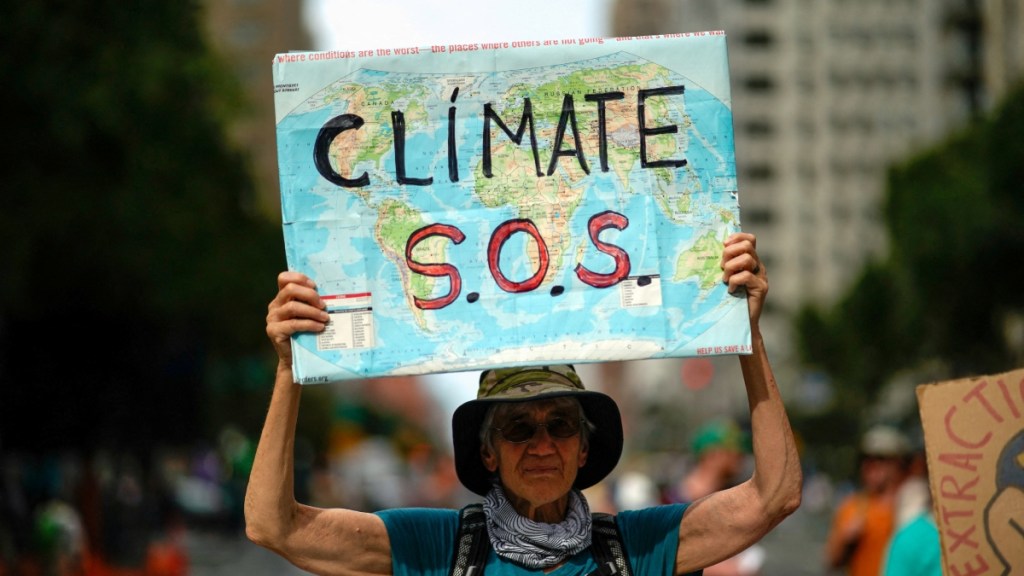By Somesh Kumar
Climate change poses many challenges to humankind. As the planet warms, extreme weather events become more frequent and intense, sea levels rise and ecosystems shift, all of which disrupt electricity generation, transmission, storage, distribution, and utilisation of energy. Deeper studies would help us understand the scale of the impact better and possible ways of mitigation.
Recently, I experienced the ineffectiveness of air conditioning and refrigerators in Kolkata. At 40°C with relative humidity of 50-55%, I felt very uneasy. Google said “feels like temperature is 48°C”. The cooling devices were unable to pump out the heat adequately, as the ambient temperature and humidity were high enough to draw more power for the desired amount of cooling. Most of our power infrastructure either becomes ineffective or loses efficiency due to climate change. Our forecasts and assumptions for designing, implementing, and operating the infrastructure must factor this in. Let us explore the impact of climate change on power infrastructure and potential solutions.
Heatwaves and energy demand
Peak demand continues to grow and reached 243 gigawatts (Gw) last year. Rising energy demand needs additional power generation capacities, and strains existing grids. In places where the urban heat island effect amplifies temperatures, air conditioning escalates energy consumption, adding pressure on ageing infrastructure.
Melting glaciers and hydropower
India has 145 Gw of hydropower, mainly commissioned on glacier-fed river streams flowing from the Himalayas. Glacial meltdown and unusual rainfall in the Western Ghats affect hydropower generation. Forecasts made during the detailed project report development may become irrelevant, as many small hydropower projects are at risk from the changing course of rivers. Changes in glacier mass alter water availability and flow patterns, impacting the reliability and output of hydropower facilities. Also, more sedimentation and flooding caused by glacial melt or heavy rain further compromise the stability of the power system.
Wind shifts from wind farms
As of April, India has installed over 46 Gw of wind power. Climate change may alter regional wind patterns, affecting the distribution and intensity of resources in potential wind energy regions. Shifts in atmospheric circulation, changes in weather systems, and variations in temperature gradients can influence wind speed and direction, leading to fluctuations in power generation. Long-term monitoring and modelling of wind resources are essential for assessing the potential impact of climate change on wind farm performance and optimising site selection and turbine design.
Ambient heat and thermal power plants
Thermal power plants, including coal, natural gas, and nuclear facilities, rely on consistent access to water for cooling and steam generation. However, induced shifts in precipitation patterns, prolonged droughts, and heatwaves pose significant challenges. As temperatures soar, power plants may struggle to dissipate heat. It is estimated that 30° C increase in ambient air temperature reduces the net power output by 18%, which decreases the mass flow rate of inlet air by 11%. On average, each degree of increase in ambient temperature results in 0.5% increase in consumption of coal.
Solar radiation on panels
Solar power is a key component of the energy transition. India has installed over 84 Gw of utility-scale solar power plants. Solar panels thrive on high radiation and cold temperature. High temperatures can reduce the efficiency of solar panels because of the temperature coefficient. As temperatures rise, solar panels become less efficient at converting sunlight into electricity — leading to decreased output and energy yields — and their lifespan are reduced.
Air pollution causes obstruction of solar radiation, altered cloud patterns, and greater variability in solar irradiance, affecting power generation from solar installations. Enhanced forecasting and grid flexibility are essential to mitigate the impact of solar variability.
Temperature and energy storage
Today we need energy storage devices to integrate intermittent power of renewable energy with the grid in forms of batteries. However, studies by the Federal University of Technology in Nigeria show the life of a battery decreases by roughly 50% for an increase in 10°C of ambient temperature. A lead acid battery with a 10-year lifespan at 25°C would have an effective “design life” of only 2.5 years if kept at 40°C, and its performance drops below 100% within two years. This is applicable for lithium-ion batteries for operating temperature above 45°C. Therefore, adequate planning is required for battery thermal management systems in energy storage.
While these issues may not hit the headlines, they impact output and revenue. There have been several instances where climate change has hit power infrastructure. The following are examples: Phata Byung Hydroelectric Project and transmission lines in Uttarakhand were washed during a cloudburst and flash floods in 2013; rooftop solar power plants were swept away by cyclone Fani in Odisha 2019; over 150 megawatts of Rewa Ultra Mega Solar power plant in Madhya Pradesh (MP) was damaged due to heavy rainfall and mudslide in 2019; a considerable portion of the world’s largest floating solar plant, at Omkareshwar Dam in MP, was damaged by high winds in April.
Climate change poses complex challenges to power infrastructure and addressing them requires proactive measures. The measures include ones to strengthen infrastructure resilience, diversify energy sources, enhance grid flexibility, and improve emergency preparedness. By investing in resilient infrastructure, enhancing forecasting capabilities, and embracing innovation, the power sector can navigate such challenges and transition to a sustainable, low-carbon future.

